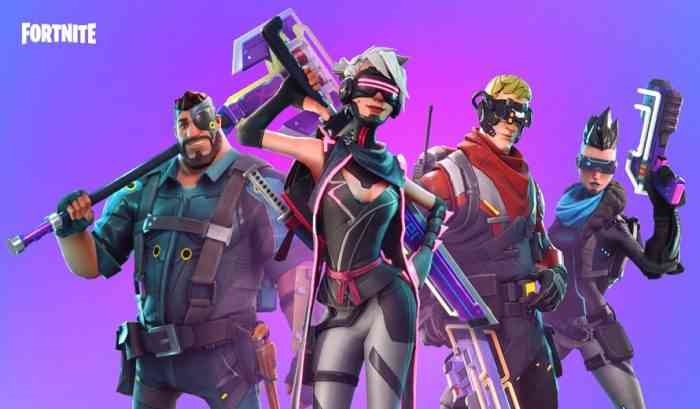With the High Cost of Fortnite’s Cosmetics, the Scourge of V-bucks Scams May, In a Way, Be Epic’s Own Fault
There’s been a long-running debate in the gaming industry about how much a game or its contents are worth, with key points focusing on game length, the amount of content inside of it, and how well the game performs on the respective hardware it was designed for. There’s also been a more recent debate that’s started quite a fire, regarding microtransactions and their place in a medium that is already notoriously expensive. Nowhere do these arguments come together to create an economical monster quite like free to play games – often revolving around building pain points for players and relieving them through spending cold hard real-world cash, microtransactions have been regarded as sketchy and irritating at best, and exploitative at worst, with acceptance and understanding of them being the unpopular opinion.
But the fact of the matter is, video games are expensive to make, the people making them need to eat, and in an ever-changing and evolving industry, there’s no lack of competition. Free to play games and microtransactions have grown up a bit over the past few years through mistakes, player backlash, and developers adjusting to keep the business model viable. It’s here that we come full circle to the conversation regarding a game or it’s content’s worth, but in the case of Fortnite (and a handful of other games), a new question arises – “How much real-world cash should a player be charged for a digital cosmetic item?”
What I’m Not Saying
Now, this instance does not cover loot boxes, full-price games that include microtransactions, “pay to win” games, or mobile games where you trade in money for extra lives or convenience. In this article, I’ll be talking about games in which the player can exchange their real-world money for a virtual currency, which can then be exchanged for cosmetic items exclusively that have no real bearing on gameplay, aside from looking fresh. More specifically, the cost of them not only in real-world cash, but in the time it takes to earn that money, and how all of that can vary from country to country.

Also, I’m not here to say “Epic should get rid of the microtransactions rabble rabble,” but instead, to point out how much more money they could be raking in by lowering the cost either of V-bucks themselves or of items in the shop, while pleasing fans and making the game’s “rewards” more accessible to it’s enormous, ever-expanding player base.
The Battle Pass Problem
First, because I know everyone is going to jump up my ass about it immediately, yes, the Battle Pass is a great deal, and as Polygon recently reported, you can indeed earn more V-bucks than you spend on it. However, one glaring issue with it is that many players find it challenging to reach Tier 100 without spending those earned V-bucks in the process, so on top of paying for the Battle Pass, you pay with your time to unlock everything in it as challenges to Tier up unlock over 8 weeks, and then depending on how much and how well you play the game, you have to spend V-bucks to unlock everything in it.

This is particularly challenging for adults with jobs and, if they even have time for it, social lives (which Fortnite may be a part of). And yes, the Battle Pass does come with a plethora of cosmetics to earn, but sometimes that one you want, the one you feel really represents you (for whatever reason) is only available in the V-bucks shop. On top of that, once you finish the Battle Pass and whatever extra challenges come with it, there’s not a whole lot of reason to return to Fortnite until the next season starts.
Taking into account this is a free-to-play game, it’s also very likely that a considerable portion of the player base is low-income, a class that often works more than one job to make ends meet. It’s not hard to imagine how frustrated those players may feel when they spend money on the Battle Pass, and then not have time to make it to that skin they bought it for in the first place, potentially embittering them towards their chosen media of escapism/relief/levity.
How Minimum Wages Play Into This
Speaking of which, let’s take a moment to talk about wages. For the sake of this article, I looked up minimum wages across North America and it was the most depressing time I’ve had in gaming journalism so far. It’s not uncommon for gamers to be those who work for, and often live on, minimum wage, with video games and a Netflix subscription being their only forms of escape from the harsh reality of the modern wealth and wage gaps (see: this awesome Polygon article on Gaming on the Minimum Wage). Additionally, you can take a look at the Wikipedia page of minimum wages by country, as well as this Xbox Store Checker website for international price differences for V-bucks to figure out what the differences may be in your respective country for the following points.

In America, the average minimum wage is $8.49 USD, with the highest being $11.50 USD in the state of Washington, and the lowest being $5.15 in the states of Georgia and Wyoming, but don’t forget, Alabama, Louisiana, Mississippi, South Carolina and Tennessee all have no minimum wage at all. In Canada, the average minimum wage is $11.43, with the highest being $14 CAD in Ontario, and the lowest being $10.96 CAD in Saskatchewan. $14 CAD is $10.63 USD, and $10.96 CAD is $8.32 USD. In the case of being paid for less than an hour, some jobs will pay in half hour or fifteen-minute increments as well.
Getting to the Point
So here’s the deal – in America, V-bucks are mostly a one-to-one exchange rate – $1 USD = 100 V-bucks. In the Fortnite shop, you can only purchase V-bucks in bulk, much like with most microtransactions. It’s $10 USD for 1,000 V-bucks, and larger increments come with “bonuses” – which, let’s be real here, they’re not bonuses, it’s standard practice for buying in bulk, any common weed dealer could tell you that. In Canada, it’s $13.49 for 1,000 V-bucks. So essentially, in places in America with minimum wages $10 or more, you would have to work one hour to be able to afford 1,000 V-bucks. In others, more than an hour, and all these same estimates apply to Canada (1hr for 1,000 V-bucks in Ontario, a little more anywhere else).

So when you go to the item shop and see this, you immediately figure out that the Power Chord skin is costing twenty-fucking-dollars of real-world money. That means that those same workers who worked one hour to afford 1,000 V-bucks, have to work two hours in real life to be able to afford this digital skin. Now, the legendary skins are the worst-case-scenario in this situation. As you can see, the other items in the shop are nowhere near as much, and from what we know, it’s easy to translate each of their prices into real-world money. The Hot Rod Glider is $5 USD, the Breakin’ Emote is $8 USD, as is the Tower Recon Specialist skin. For what it’s worth, the cheapest item I’ve seen is a common emote for 200 V-bucks, or $2 USD.
Of course, all of this is how Fortnite made Epic $318 Million USD this past May, more than any other free-to-play game has made in their highest grossing months. Though it’s hard to believe that these price points aren’t pushing potential customers away, so I can’t help but wonder how much more they would make if they didn’t charge quite as much.

Naturally, Fortnite hardly set the standard for overpriced digital clothing, as I found that Paladins, Smite, and Warframe all have similar price points on cosmetics for their plethoras of characters. But overall, is it really necessary? Like I said before, I understand that video games have high development costs and developers need to get paid, but would it not be in their best interest to lower the price, enticing players to spend more on their respective digital currency?
As someone who has repeatedly smashed that purchase button on the $1 option in Pokemon GO during the most desperate of times, I personally would feel compelled to transition more of my hard earned real-world money to V-Bucks if it went further.
And Another Thing!

The high cost of V-bucks and other in-game currencies is practically guaranteed to be a catalyst for the rampant scams surrounding those games, seeing as V-bucks scams have recently taken over YouTube, leading to thousands of accounts being attacked by hackers installing malicious software on victims computers. Supplement that with Fortnite’s popularity with kids who have not had the experience and insight older generations have to understand who and what is and isn’t trustworthy on the internet, the World Health Organization designating gaming addiction as a disorder, and a government eager to use the medium and Fortnite in particular as a scapegoat for just about anything and you’ve got a recipe for disaster.
Fortnite: Battle Royale is currently available for PC, PS4, Xbox One and Nintendo Switch.